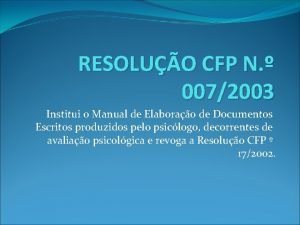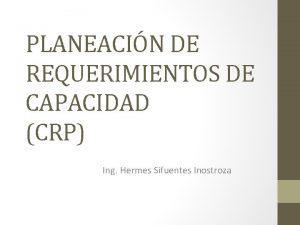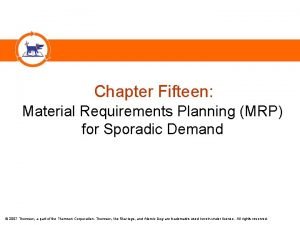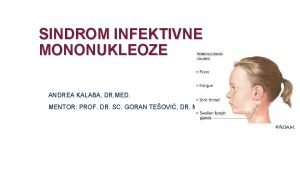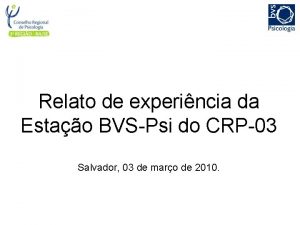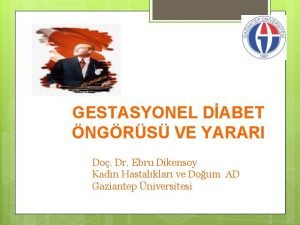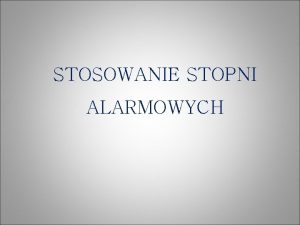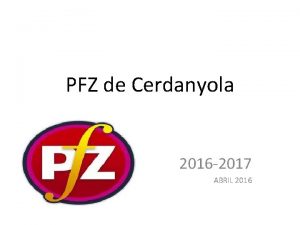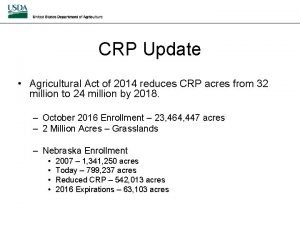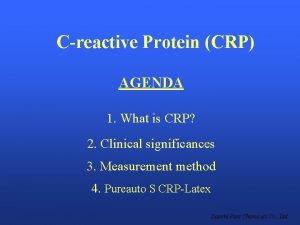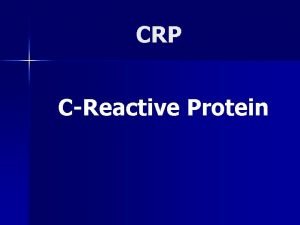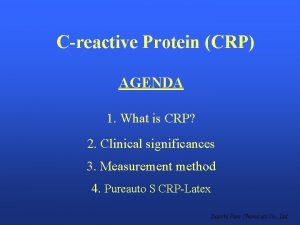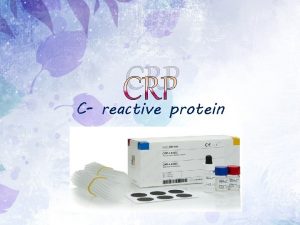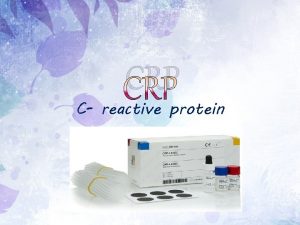The Livestock CRP A program to translate livestock









- Slides: 9

The Livestock CRP: A program to translate livestock research into impact Tom Randolph Global Agenda for Sustainable Livestock 13 June 2018

CGIAR on the ground: 15 research centres; over 70 countries

What’s a CGIAR Research Program or CRP? • Genesis 4 Global Integrating programs – Feature of CGIAR reform to increase efficiency and improve impact – Donor funding channeled to CRPs rather than Centres • • • Program model attractive Focus Accountability * ** • Features High-level themes Constitute CG portfolio Multi-centre + external partners Led by a centre A combination of funding from 4 different windows – CRP proposal reviewed and approved for 3 -6 years, but funding allocated annually – – – Excellence of Breeding *PIM = Policies, Institutions and Markets **WLE = Water, Land Ecosystems

The Livestock & Agri-Food Systems CRP • Rationale: Rapid increase in demand for animal-source foods in lower-income countries currently supplied mainly by smallholder farmers offers opportunity to: – Increase productivity and supply sustainably of especially nutritious food – Increase productivity and income for low-income smallholders – Strengthen resilience of vulnerable rural populations • Goal and Objectives: A well-nourished, equitable and environmentally healthy world through livestock research for development – – – Appropriate breeds available, affordable and widely used Improve livestock health and health service delivery Increase livestock nutrition Reduce environmental footprint of livestock production Maximize livestock-mediated livelihoods and resilience to risk among smallholder and pastoral producers and their communities, and enhance availability and access to animalsource food for consumers

Working hypothesis • Challenge of showing impact of livestock research partly because it is difficult to get uptake of piecemeal improvements • Requires more step-wise changes in livestock systems, e. g. improved genetics in dairy cattle requires improved health, feeding Ø New focus on working with development partners to combine livestock research into integrated evidence-based interventions in selected systems and sites ready for scaling up and out by those same and other development partners • Two targets: 1. 2. Animal-source food value chain development: facilitating the transition from smallholder livestock keeping and informal markets to more productive and higher-value professional agri-business opportunities for both women and men Strengthening resilience of livestock-based livelihoods: Protecting and enhancing other critical roles that livestock play where intensification may not be possible, including as part of crop-livestock and backyard systems

Brings together 5 partners Covers all livestock research areas; forage genebank Forage research, esp. breeding; forage-mediated environmental impacts; value chain development; forage genebank Small ruminants; dryland feed & forages; pastoralist systems; forage genebank All livestock research areas, with initial focus on herd health Improving the research-development interface

Demonstrating how livestock research can catalyze change in selected countries Structured as 5 Flagship Projects: Livestock genetics Livestock health Feeds and forages Sites pending assessment and resources: Burkina Faso, Tunisia, India and sites in Central Asia, southern Africa. Targeting 4 priority countries: Livestock livelihoods and agrifood systems Livestock and the environment Inclusive sustainable intensification (value chains): Uganda, Ethiopia, Tanzania and Vietnam Resilience: building on the systems work in Vietnam

Uganda pork value chain • Starting point: – Unorganized, low priority – But important: 3 million pigs kept by 1 million households • Organized multi-stakeholder platform – Increasing recognition, government support – Stimulated SME business development • Joint research agenda established – – Value chain assessment Testing farm management best-bets Pork health, esp. African Swine fever Pork safety and zoonoses/EIDs (with Agriculture for Nutrition & Health CRP)

CGIAR Research Program on Livestock livestock. cgiar. org The program thanks all donors and organizations which globally support its work through their contributions to the CGIAR system The CGIAR Research Program on Livestock aims to increase the productivity and profitability of livestock agri-food systems in sustainable ways, making meat, milk and eggs more available and affordable across the developing world. This presentation is licensed for use under the Creative Commons Attribution 4. 0 International Licence.
